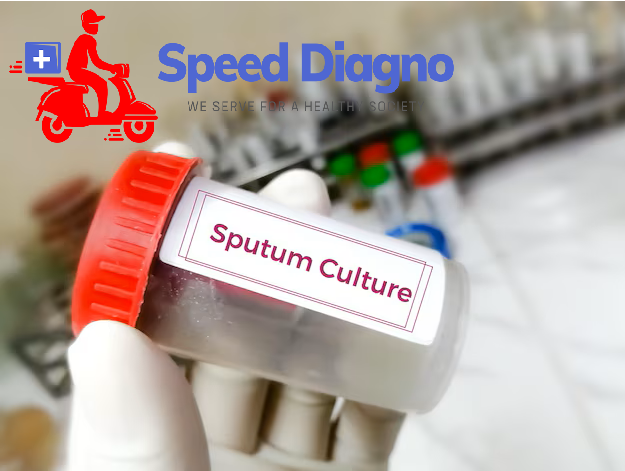- Home
-
Test Categories
- Diabetes
- Urinary
- Thyroid
- RTPCR
- Genetic
- Cancer
- Haematology
- Biochemistry
- Serology & Immunology
- Clinical Pathology
- Cytology
- Microbiology
- Endocrinology
- Histopathology
- MOLECULAR DIAGNOSTICS
- Pregnancy(Biochemistry)
- Liver
- Prostate
- Fertility
- Gastro
- Autoimmune Disorders
- Heart
- Kidney
- Vitamins
- Tuberculosis (TB)
- Anemia
- Fever
- Allergy
- Blood Tests Rare
- Profiles
- Packages
- About Us
- Why Choose Us
- Upload Prescription
- Corporate Wellness
- Contact Us

-
Overview
Sputum Culture and Sensitivity is a diagnostic test used to detect and identify bacteria, fungi, or other microorganisms causing respiratory tract infections, such as pneumonia, bronchitis, or tuberculosis. The test involves culturing a sample of sputum (mucus coughed up from the lungs) in the laboratory to grow any microorganisms present, followed by sensitivity testing to determine which antibiotics or antifungal medications are most effective against the identified pathogens. This test is crucial for diagnosing infections in the lungs and guiding targeted treatment.
Patient Preparation for Sputum Culture and Sensitivity
Fasting Requirements:
- Fasting: No fasting is required for this test. However, the sample should ideally be collected in the early morning when the concentration of pathogens is highest.
Other Preparations:
- Hydration: Drink plenty of fluids the night before the test to help loosen mucus and make it easier to cough up a good-quality sample.
- Oral Hygiene: Rinse your mouth with water before collecting the sample to remove food particles and reduce contamination from oral bacteria. Avoid using mouthwash or toothpaste before collection as they can affect the sample.
- Avoid Antibiotics: If possible, sputum should be collected before starting antibiotics, as these can affect the test results. Inform your healthcare provider if you are already on antibiotics.
Sample Collection Process by Speediagno Phlebotomist or Technician:
Speediagno ensures a professional and sterile environment for sputum collection, following strict protocols to prevent contamination and ensure accurate results.
Preparation for Sputum Collection:
- Identify the Patient: The technician confirms the patient’s identity using at least two identifiers (e.g., name and date of birth).
- Consent and Explanation: The procedure is explained to the patient, including instructions on how to properly collect the sputum sample.
Sputum Collection Process:
- Hand Hygiene and PPE: The technician performs hand hygiene and wears appropriate PPE, including gloves, masks, and eye protection, to maintain infection control standards.
- Patient Positioning: The patient is seated comfortably, usually in an upright position, to facilitate deep coughing.
- Collection Technique:
- The patient is asked to take deep breaths, hold their breath for a few seconds, and then cough deeply to bring up sputum from the lungs (not saliva from the mouth or throat).
- The patient then spits the sputum into a sterile container with a tight-fitting lid. The sample should be thick, mucus-like, and collected in sufficient quantity (usually about 5-10 mL).
- Avoid Contamination: It is important that the sputum is collected without touching the inside of the container or its lid to prevent contamination.
Post-Collection Care:
- Labeling and Sealing: The container is sealed securely and labeled with the patient’s details, including the date and time of collection.
- Transport: The sample should be promptly transported to the laboratory, usually within 1-2 hours of collection, to preserve the integrity of the sample.
Safety and Hygiene Protocols:
- Proper Disposal: Used gloves, masks, and any other disposable items are handled as biohazardous waste and disposed of in designated containers.
- Documentation: Proper documentation of the procedure, including details of the collection time, is completed to ensure traceability and accurate processing.
Laboratory Processing:
- Culture: The sputum sample is cultured on special media to grow bacteria, fungi, or other microorganisms. The culture process usually takes 24-48 hours, depending on the type of pathogen.
- Sensitivity Testing: Identified pathogens undergo sensitivity testing to determine which antibiotics or antifungal medications will be most effective in treating the infection.
This careful approach to sputum culture and sensitivity testing ensures high-quality samples and accurate results, essential for diagnosing and managing respiratory infections effectively.
All test groups and subgroup
-
SPUTUM FOR CULTURE AND SENSITIVITY
-
Culture Method
-
Sample
-
Colony Count
-
Culture Report:
-
Antibiotic Sensitivity ( Disc Diffusion Method)
-
Antibiotic Name
-
Cefuroxime(XM)
-
Amoxicllin(AMX)
-
Penicillin G (P)
-
Amoxcillin-Clavulanic Acid (AMC)
-
Ciprofloxacin(CL)
-
Ofloxacin(OF)
-
Co-Trimoxazole (SXT)
-
Cephalexin(CFM)
-
Cefazolin(CFZ)
-
Erythromycin(EM)
-
Chloramphenicol(C)
-
Nitrofurantoin(NL)
-
Tetracycline(TE)
-
Azthromycin(AZ)
-
